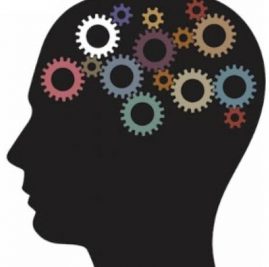Recent research on Cognitive Behavior Therapy (CBT) for grief considers the role that cognitions surrounding a loss play in how an individual adapts to grief. “Adaptive” grief is considered to be a “healthy process” wherein the grieving individual allows themselves to feel the pain of the loss in order to organize it into their new belief system and the way of experiencing the world (Kosminksky, 2017). In CBT for grief, a straightforward way of delineating between “helpful” and “non-helpful” cognitions may be to inquire as to whether or not thinking about the loss makes one feel better or worse and whether one’s current way of thinking about the loss provides energy or “drains it”. As the loss of a loved one may also signify the loss of meaning in one’s life, part of coping adaptively with grief is to construct a story about the loss which fits meaningfully into one’s current life. One aspect of maladaptive coping is rumination, or repeatedly thinking about the negative aspects of the loss in relation to one’s sense of self, their future, and the world (Kosminksky, 2017). Rumination is challenging because it is a form of avoidance for mourners and may keep one “stuck” in the emotional pain of grief.
Research suggests that individuals who engage in “abstract processing”, in other words focusing on broad, existential questions about the world and negative evaluations of the self, may not be able to cope in a healthy way. For example, individuals who repeatedly ask themselves, “why me?” or who think, “I am weak, so this happened to me” may experience a sense of alienation and dislocation from the experience instead of engaging actively in problem-solving and moving forward (Kosminksky, 2017). Kosminsky (2017) suggests that individuals who engage in “concrete” processing, or “focusing on the loved one’s last days, memories of their life, and plans for the future” may experience a more balanced or adaptive processing of the loss. Kosminsky (2017) suggest that CBT focused on approaching, rather than avoiding, painful memories assists processing. For example, a CBT clinician working with a grieving client struggling with unanswered questions and overwhelming uncertainty may help the client experience an adaptive grief process by engaging the client in a dialogue with repetitive thoughts (“dialogue with the why”) (Kosminksky, 2017). This may serve to increase cognitive control and begin to build the loss into the narrative of the grieving client’s life. Homework assignments may serve to challenge the grieving client to “take responsibility” for actions in their life and may subsequently reduce anxiety, depression, and create a “new relationship” with the memory of their lost loved one (Kosminksky, 2017). Overall, shifting the focus on treatment to concrete, specific memories of a lost loved once may assist a grieving individual in re-formulating a sense of the deceased and may help to incorporate the loss into a meaningful narrative in order to move on and find peace.
Author: Nora Brier, M.A.

